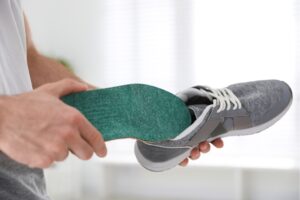Are you tired of feeling tightness and discomfort in your hips? Do you want to improve your athletic performance or alleviate lower back pain? Whatever your reason may be, addressing hip pain and enhancing your hip mobility is essential for better health. In this blog, we will walk you through everything you need to know about hip mobility – its importance, common issues affecting it, the science behind it, and distinguishing between stretching and mobility exercises. We will also provide you with a hip mobility routine that includes exercises for improved flexibility and strength.
Understanding Hip Mobility and Its Importance
Hip mobility, referring to the range of motion and flexibility in the hip joints, is vital for proper movement and function in everyday activities. As the center of your body’s movement, your hips handle a high level of demand every single day. When our hips are tight, it can lead to pain in the lower back, knees, and other parts of the body. Difficulty performing basic movements like squatting or lunging may indicate limited hip mobility. Hip tightness can demonstrate as discomfort or pain in the groin or hamstrings, affecting your range of motion and flexibility. It is crucial to address these issues through mobility work and stretches to maintain a full range of motion and promote optimal health and well-being. Improving hip mobility can have a positive impact on athletic performance, posture, and overall quality of life. Regular hip mobility exercises and stretching are key in maintaining optimal hip function.
Distinguishing between Stretching and Mobility Exercises
Stretching and mobility exercises serve distinct purposes in improving hip mobility. While stretching focuses on lengthening muscles, mobility exercises aim to enhance joint function. Incorporating both into your routine can offer several advantages. Mobility exercises enable a full range of motion and enhance performance in various activities. Proper warm-up and cool-down routines maximize the benefits. Incorporating active stretches for the hip adductors and hip flexion into your warm-up routine, you can alleviate tightness and discomfort in the hips, glutes, and lower back. This can be particularly beneficial for athletes, as it helps improve performance and reduce the risk of injuries.
Stretch and Mobility Exercises
90/90 Rotations – 90/90 rotations are a great way to target both internal and external rotators, improving their flexibility and reducing tightness. Incorporating the 90/90 stretch into your routine can also alleviate lower back pain and improve overall hip mobility. If you’re interested in incorporating it into your routine, here are the steps you can follow:
1. Start by sitting on the floor with your legs in front of you.
2. Bring your right leg forward and bend your knee at a 90-degree angle, with your shin parallel to the front of your mat. Bring your left leg back and bend your knee at a 90-degree angle, with your shin parallel to the side of your mat.
3. Your right foot should be in front of your left knee, and your left foot should be behind your right knee.
4. Place your hands on the floor for support and lengthen your spine. Try to equally sit on both hips and avoid leaning on one side figure
5. Slowly begin to rotate your torso to the right, keeping your hips and knees stationary. (Knees should move like windshield wipers). This movement can be performed continuously or can be held for 30 seconds for a more static stretch
6. Aim for 3 sets of 8-10 reps
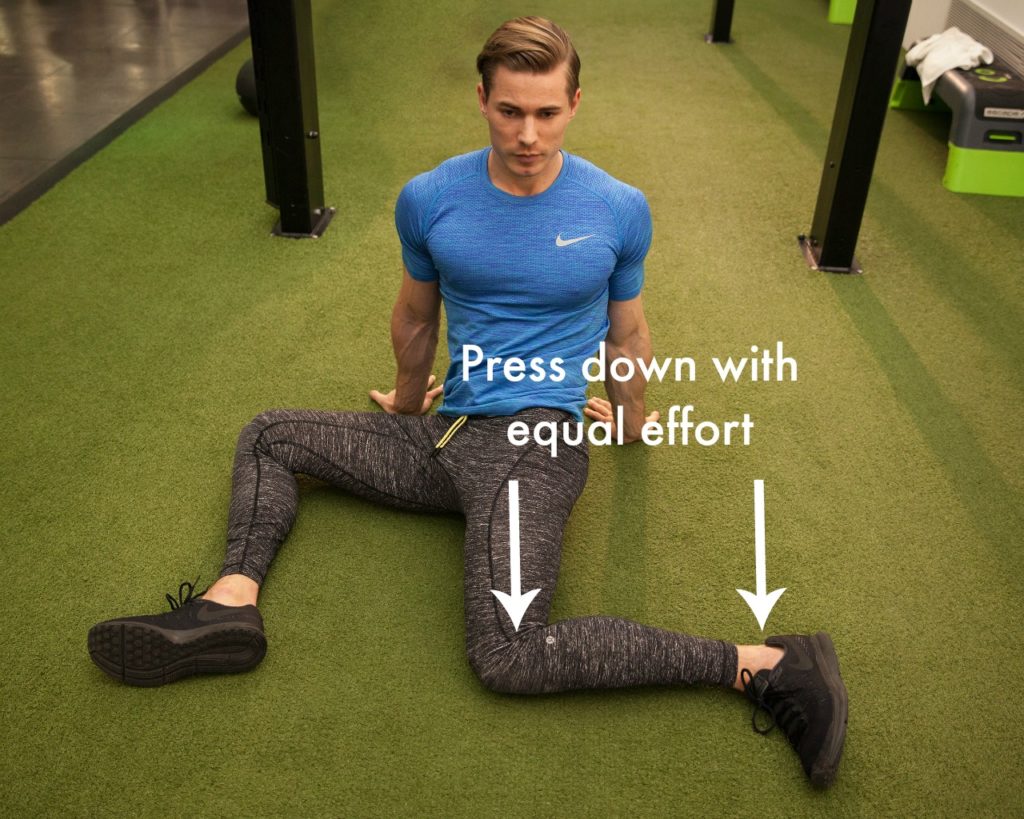
Hip CARs – Hip CARs (controlled articular rotations) are an effective way to improve hip mobility and overall health. Performing hip CARs while standing on one leg can help improve balance and stability in addition to increasing mobility. To perform hip CARs, follow these steps:
1. Start by standing on one leg. Extend your opposite arm out to the side for balance. Hold onto a railing with the same-side arm for support.
2. Raise the knee of the elevating leg, as high up to the chest as it can go.
3. Slowly open the knee to the side and turn your foot outwards, making sure to keep your hips straight. As you rotate, focus on moving your hip joint through its full range of motion, bringing it back to the center once gone through.
4. Continue the opening motion for 5-10 repetitions, then switch legs and repeat 3 times.
Cossack Squats – The Cossack squat is an excellent exercise to improve hip mobility. Here are the steps to perform this exercise:
1. Begin in a standing position with feet shoulder-width apart and toes pointing forward.
2. Take a wide step to the side with one foot while keeping the other foot planted on the ground.
3. Hinge at the hips and lower your body towards the ground, ensuring that your chest is up and back is straight.
4. Keep your extended leg straight and your foot flat on the ground or to get deeper into the stretch, point your toe up and only have your heel touching the ground.
5. Hold this position for a few seconds before pushing back up to the starting position.
6. Repeat the movement on the opposite side.
7. Aim for 3 sets of 8-10 reps on each side.

Figure 4 Stretch – The Figure 4 stretch is a fantastic exercise for targeting the glutes and hip rotators. To perform the Figure 4 stretch, follow these steps:
1. Lie on your back with your knees bent and feet flat on the ground.
2. Cross your right ankle over your left knee, creating a “figure 4” shape with your legs.
3. Interlace your hands behind your left thigh and gently pull your left leg towards your chest.
4. Aim for 3 sets of 30 second reps, then release and switch sides.

Butterfly Stretch – The Butterfly stretch is a classic exercise for improving hip flexibility. This stretch targets the inner thighs and groin muscles, allowing for increased range of motion in the hips. Regularly incorporating the Butterfly stretch into your exercise routine can improve your hip mobility and overall health. To perform this stretch, follow these steps:
1. Sit on the floor with your knees bent and the soles of your feet touching each other.
2. Gently pull your heels towards your body and let your knees fall towards the ground.
3. Use your elbows to press down on your knees to deepen the stretch.
4. Hold the stretch for at least 30 seconds and repeat three times.
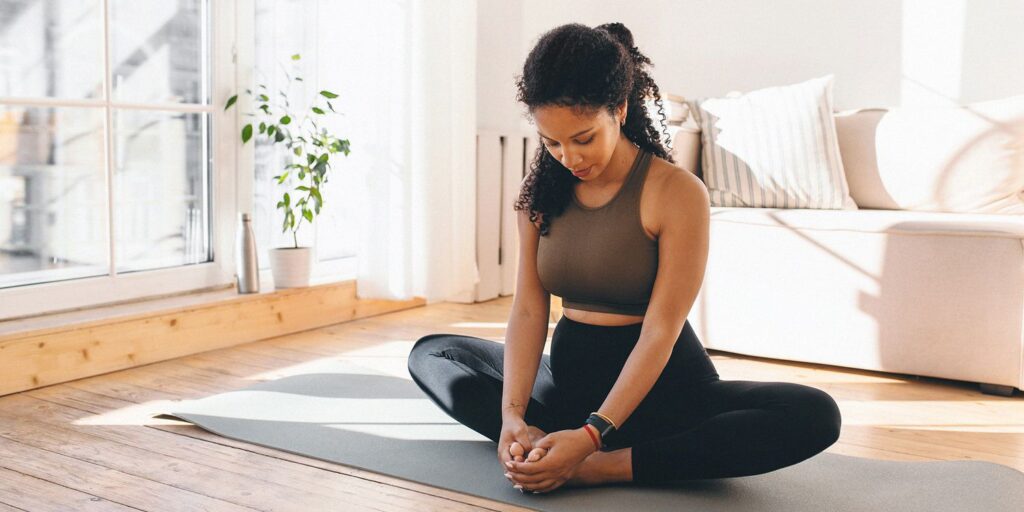
Hip Flexor Stretch – Tight hip flexors can restrict hip mobility and lead to discomfort. By regularly performing this hip flexor stretch, you can help lengthen and loosen these muscles, ultimately improving your hip mobility and overall health. Here are the steps on how to perform the stretch:
1. Start in a lunge position with your right foot forward and your left knee on the ground.
2. Engage your core and shift your weight forward until you feel a stretch in your left hip flexor.
3. Hold the stretch for 30-40 seconds, then release and switch sides.
4. Repeat the stretch on each side 3 times.
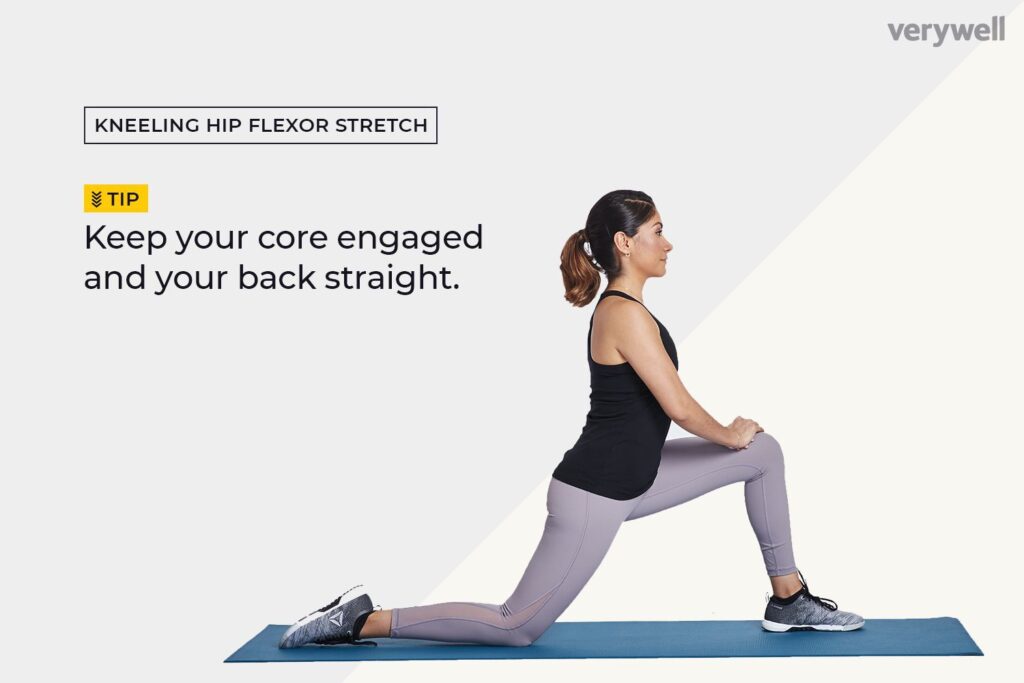
Pigeon Pose – If you’re looking to improve your hip mobility, the pigeon stretch is a great exercise to incorporate into your routine. Performing the pigeon stretch regularly can help improve hip flexibility and reduce tightness in the hips. Here are the steps to perform the pigeon stretch:
1. Begin in a high plank position with your hands directly under your shoulders and your feet hip-width apart.
2. Bring your right knee forward and place it behind your right wrist. Your right foot should be close to your left wrist.
3. Extend your left leg behind you, keeping your toes tucked under.
4. Lower your body down to the ground, resting on your forearms or completely lowering your chest to the ground if you’re able to.
5. Hold the stretch for at least 30 seconds, then switch sides and repeat 3 times.
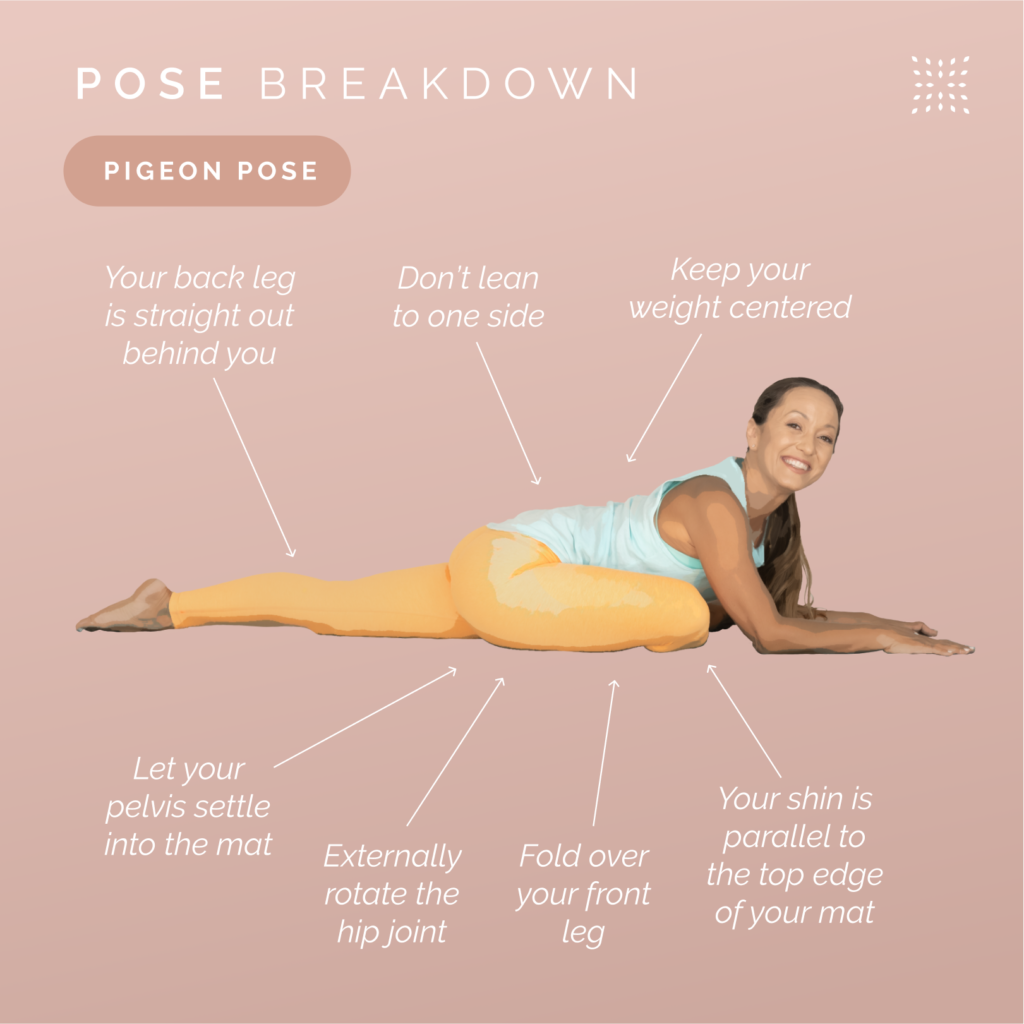
The Relationship between Tight Hips and Lower Back Pain
Engaging in hip mobility exercises can provide relief from lower back pain. By targeting the hip flexors, glutes, and other muscles involved in lower back support, these exercises can reduce stress on the lower back. Incorporating them into your daily routine can support a healthy back. Limited hip mobility can lead to compensatory movements that put stress on the lower back. Alleviating lower back pain can be achieved by addressing tight hips through stretching and mobility exercises. Poor hip flexibility can cause imbalances and poor posture, making lower back pain worse. Improving hip mobility can relieve pressure on the lower back, promoting better spinal alignment.
Frequently Asked Questions
What are some common causes of poor hip mobility?
Sitting for extended periods can result in tight hip flexor muscles and reduced mobility, while hip joint injuries or surgeries can also impact hip mobility. Although aging naturally decreases hip flexibility, regular exercise, including yoga, can help maintain it.
How often should I incorporate hip mobility exercises into my fitness routine?
In order to improve hip mobility and reduce aches and pains due to stiffness, it is recommended to incorporate hip mobility exercises into your fitness routine at least 2-3 times a week. Consistency is key, so start with simple exercises and gradually increase intensity. Listen to your body and avoid pushing too hard if you have any pre-existing injuries. By gently and consistently practicing these exercises, you’ll definitely notice greater mobility in your hips.
Can improving hip mobility help with specific conditions or injuries?
Improving hip mobility has numerous benefits for specific conditions or injuries. It can alleviate lower back pain, knee pain, and hip impingement. Athletes can also enhance their performance in sports that require hip movement. Additionally, it can improve balance and reduce the risk of falls in older adults. However, consulting a healthcare professional is crucial before starting any new exercise program or if you have pre-existing conditions or injuries.
Conclusion
To sum up, hip mobility plays a crucial role in our overall health and athletic performance. It is important to understand the connection between hip mobility and other areas of our body, such as lower back pain and hip stability. By incorporating hip mobility exercises into our routine, we can improve flexibility, strength, and reduce the risk of injuries. Start with simple exercises like the 90/90 stretch and gradually progress to more challenging ones like the Cossack squat. Consistency is key when it comes to improving hip mobility, so make sure to create a training plan and stick to it. With dedication and proper technique, you can enhance your hip mobility and enjoy the benefits it brings to your overall well-being.
While you’re here…
Browse Services Available at EHP here: https://www.etobicokehealthclinic.com/services/
Check Out the Products we Carry In-Clinic and Online: https://www.etobicokehealthclinic.com/products/
Get To Know Our Staff: https://www.etobicokehealthclinic.com/practitioners/
Take a Look at Our Current Promotions: https://www.etobicokehealthclinic.com/promotions/
Read More Blogs From Us Here: https://www.etobicokehealthclinic.com/blog/
Book an Appointment Now: https://etobicokehighperformancehealth.janeapp.com/
Contact Us Here: https://www.etobicokehealthclinic.com/contact/
Follow Us on Instagram: https://www.instagram.com/ehpclinic/


